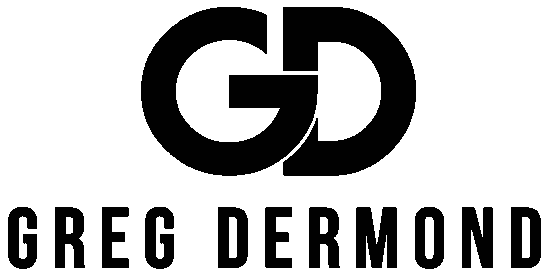20 Sales Statistics to Know
1. 44% of salespeople give up after a single follow-up attempt.
2. Gong's data science team analyzed 15 months of data and found average salespeople made far more calls in the last month of the quarter than the first two. And the success rate of those "eleventh hour" calls were usually lower than
any other month.
3. Most prospects (96%) research companies and products before engaging with a sales representative (HubSpot).
4. An analysis of more than 2,200 American companies found those who attempted to reach leads within an hour of conveyed interest, were nearly seven times likelier to have meaningful conversations with decision makers than those who waited even 60 minutes.
5. The vast majority of prospects want to read emails at 5 and 6 a.m. (Who knew there were so many early
birds out there?)
6. The more you write, the less likely you are to get a response. Only one in three messages that are longer than 2500 words receive a reply. However, you shouldn't be too brief: A 25-word email is roughly as effective as a 2000-word one. What's the sweet spot? Between 50 and 125 words -- or around the length of this paragraph.
7. According to Gong's analysis of 519,000 discovery calls, there's a clear relationship between the number of questions a rep asks and their chances of success. In other words, if you want your discovery call to go well, make sure you're periodically posing questions to the buyer.
8. Wondering what to ask? Questions about your prospect's business pain points and objectives are closely tied
to a won deal.
9. And when should you ask these questions? While average salespeople ask most of their questions at the beginning of a call -- usually because they're moving through a checklist -- great ones space their questions evenly throughout the meeting. This makes the conversation feel like a natural back-and-forth rather than an interview.
10. 70% of salespeople only send a single email to a prospect.
11. 33% of people open or discard emails based solely on the subject line
12. Google found nearly half of all buyers are millennials.
13. Making sales calls within an hour of receiving an initial inquiry yields the best results.
14. Wednesday is the most effective day for calling leads.
15. Among sales managers, 43% believe CRM usage is one of the most important productivity measures.
16. Top performers don’t necessarily talk less; they get their prospects to talk way more (Sales Insights Lab).
17. One in four salespeople majored in business. The second most popular major? The degree of life. 17% never attended college.
18. The typical AE spends 2.7 years on the job and takes 4.7
months to ramp.
19. Only 39% of salespeople intended to go into sales.
20. People are now spending about 40 percent of their time at work engaged in non-sales selling – persuading, influencing, and convincing others in ways that don’t involve anyone making a purchase. Across a range of professions, we are devoting roughly twenty-four minutes of every hour to moving others.
a. People consider this aspect of their work crucial to their professional success – even in excess of the considerable amount of time they devote to it.
Sources:
https://blog.hubspot.com/sales/sales-statistics
See “How Does Gallup Polling Work?” available at http://www.gallup.com/poll/101872/how-does-gallup-polling-work.aspx.

10 Personal Finance Statistics to Know
1. A Gallup poll found only about 1/3 of Americans (32%) maintain a household budget.
a. Only 30% of Americans have a long-term financial plan that includes savings and investment goals.
b. You’re most likely to budget if you make at least $75,000 per year.
2. In 2022, the average household earned $94,003, before taxes. Average expenditures were $72,967, leaving $21,036 in free cash flow. (Debt.com)
a. Around 23% of housing costs go towards mortgage payments and property taxes, while 21% of housing costs are spent on rent.
b. The average household spends 61% of their food budget on groceries and 39% on dining out.
c. 37% of transportation costs go towards vehicle purchases, such as paying off an auto loan; 25% goes to gas and oil, with the remaining 31% spent on other costs, such as repairs.
d. For healthcare, 66% of the budget covers health insurance.
3. U.S. women are outpacing men in college completion, including in every major racial and ethnic group
a. Today, 47% of U.S. women ages 25 to 34 have a bachelor’s degree, compared with 37% of men.
b. The share of young women with a bachelor’s degree has increased by 22 percentage points since 1995, from 25% to 47%.(Pew Research Center).
4. 2023 research on Changes in U.S. Family Finances from 2019 to 2022, the Federal Reserve found that American families’ assets have seen growth:
a. Between 2019 and 2022, the “conditional median value” of assets such as checking accounts, savings accounts, and money market accounts increased by 30%.
b. Over half of Americans held different types of retirement accounts – individual, 401(k), 403(b), and thrift savings accounts – in 2022, up nearly 4% from 2019.
c. 21% of families had “direct ownership of stocks” in 2022 – a record-breaking change from 15% in 2019.
5. As of January 2025 according to the Federal Reserve:
a. The unemployment rate stands at 4.1%.
b. The inflation rate stands at 2.4%.
c. The GDP for Q3 2024 is 3.1%.
6. Many remote workers say they’d be likely to leave their job if they could no longer work from home.
7. As of November 2024, The Federal Reserve listed the average personal savings rate in the U.S. at 4.4%.
8. By and large, the U.S. adult population appears to have an intuitive, basic level of understanding of investment risk but seems much less aware about how to manage that risk. (Finra Foundation).
9. A GOBankingRates report finds 13.7% of Americans have $0 saved for retirement.
a. 28.6% have less than $10,000.
b. More are 27% more likely to have no retirement savings.
c. 8 out of 10 Millennials have started a retirement fund.
d. But Millennials are 6% less likely to have retirement savings than Gen Xers.
- 63% of Gen X has more than $10,000 saved and 40% have over $100,000.
10. Average Retirement Savings – how do you compare?
a. 66% of Americans either believe their retirement savings are off track or aren’t sure.
b. The median savings balance stands at $87,000, based on the latest Federal Reserve data.
c. The median household net worth for a head of household age 35-44 years old was $135,300.
d. For a head of household aged 45 to 54 years old, that figure was $247,200.
e. In the 55-64 age range, median net worth was $364,500.
Source: https://www.debt.com/statistics/

